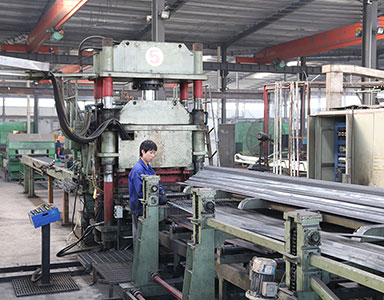The Impact of Highway Noise Barriers on Urban Communities
Highway noise is an increasingly pressing issue in urban areas, affecting the quality of life for countless residents living near busy roadways. The relentless roar of traffic can lead to stress, disturbed sleep, and health problems, compelling cities and governments to seek solutions. One widely adopted response is the implementation of noise barriers, which serve not only to mitigate sound but also to enhance the living environment in urban settings.
Understanding Highway Noise
The sound generated by vehicular traffic is a complex mix of engine noise, tire friction, and even road surface interactions, which can reach levels exceeding 80 decibels. This incessant noise pollution significantly impacts nearby communities, contributing to heightened stress levels and increased risks of cardiovascular diseases. Research has shown that prolonged exposure to high levels of noise can lead to sleep disturbances, reduced concentration, and a decrease in overall well-being. As urban populations continue to grow, the need for effective noise mitigation strategies becomes ever more critical.
The Role of Noise Barriers
Noise barriers, also known as sound walls, are structures designed to block or absorb sound waves generated by traffic on highways. They can be constructed from various materials, including concrete, wood, earth, or recycled plastics, and come in various heights and designs to suit the specific needs of a location. Their primary goal is to reduce sound levels reaching residential areas, parks, and schools, thereby improving the quality of life for individuals living in proximity to busy roads.
Types and Design of Noise Barriers
The effectiveness of noise barriers depends on several factors, including height, length, and the materials used. Taller barriers can significantly reduce noise levels, particularly if they extend beyond the line of sight from the source of the noise. Additionally, barriers made from sound-absorbing materials can help decrease the reflection of noise waves, further enhancing their effectiveness. Aesthetic considerations are also increasingly important, with many cities opting for barriers that blend with the surrounding environment through innovative designs and landscaping.
highway noise barrier

Environmental and Community Benefits
Beyond their primary function of reducing noise, highway noise barriers can offer various environmental benefits. For instance, they can act as wildlife corridors, helping to preserve local ecosystems by providing safe passage for animals across busy roadways. Additionally, well-designed barriers can serve as filters, removing pollutants from the air and improving local air quality.
Beyond environmental considerations, noise barriers can also foster a sense of community. By shielding residential neighborhoods from highway noise, these structures can enhance property values, create more serene living environments, and encourage outdoor activities. Communities can further beautify these barriers through landscaping or artistic murals, turning a functional structure into a cultural landmark.
Challenges and Considerations
Despite their numerous benefits, there are challenges associated with the implementation of highway noise barriers. The costs of construction and maintenance can be significant, leading to debates among policymakers about resource allocation. Additionally, barriers must be carefully designed to avoid creating unintended consequences, such as directing noise toward other communities or creating visual obstructions.
Conclusion
In conclusion, highway noise barriers represent a crucial tool in the ongoing battle against urban noise pollution. By effectively reducing sound levels, they contribute not only to improved public health and well-being but also to the preservation of local biodiversity and community cohesion. As urban areas continue to grow, investing in such infrastructure becomes essential for ensuring a quality living environment for all residents. With thoughtful design and implementation, highway noise barriers can transform noise-laden landscapes into spaces where communities can thrive.
-
The Best Metal Mesh Solutions: Expanded Aluminum Metal vs. Expanded Stainless Steel Metal
NewsSep.10,2024
-
Round Perforated Sheets vs. Hexagonal Perforated Sheets vs. Embossed Perforated Sheet Metal
NewsSep.10,2024
-
Perforated Metal Sheets
NewsSep.10,2024
-
Experience The Excellence Of Stainless Steel Grating
NewsSep.10,2024
-
Discover the Versatility Of Metal Mesh Expanded Forming Machines
NewsSep.10,2024
-
Discover The Advantages Of Steel Grating For Sale
NewsSep.10,2024
Subscribe now!
Stay up to date with the latest on Fry Steeland industry news.

